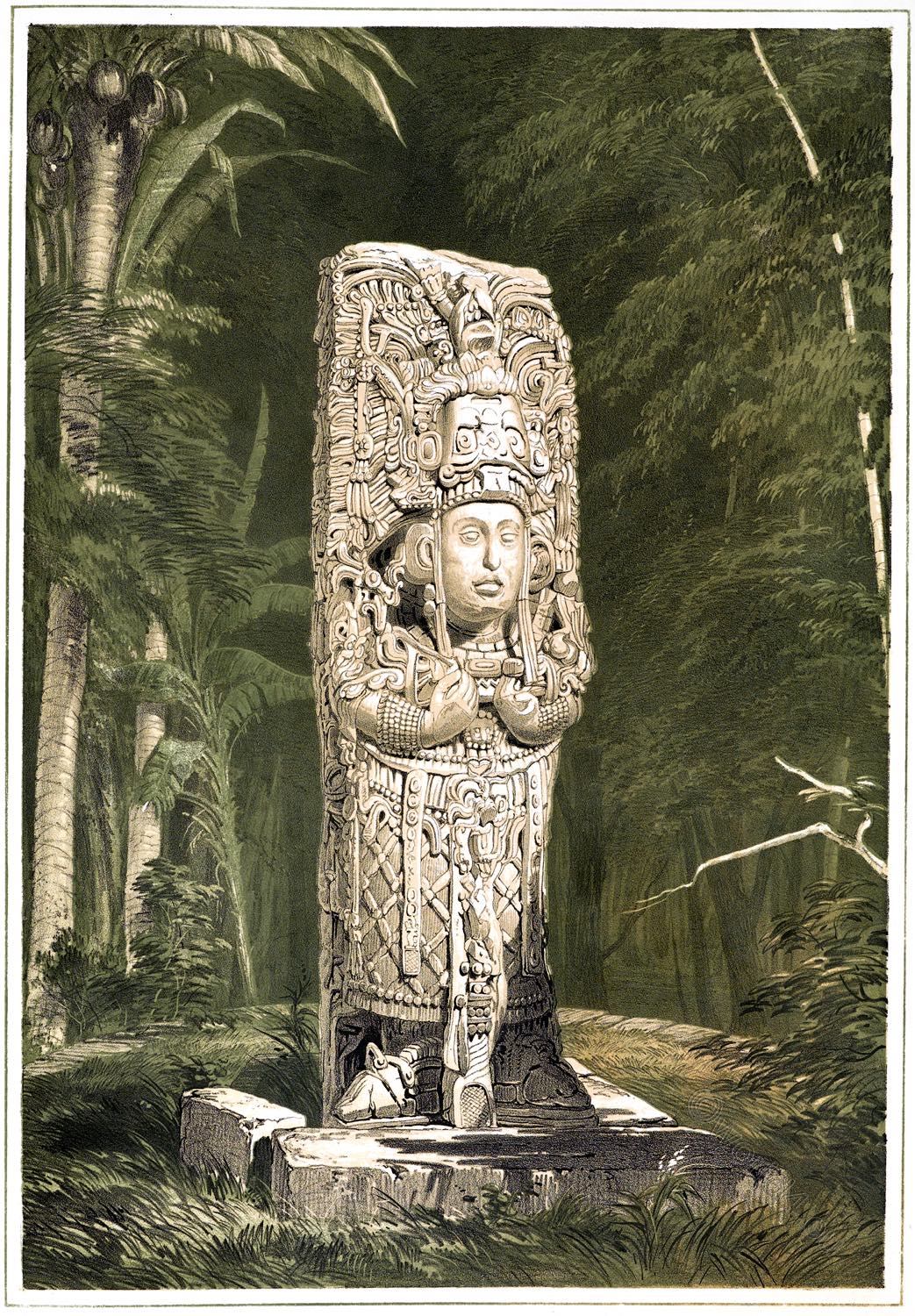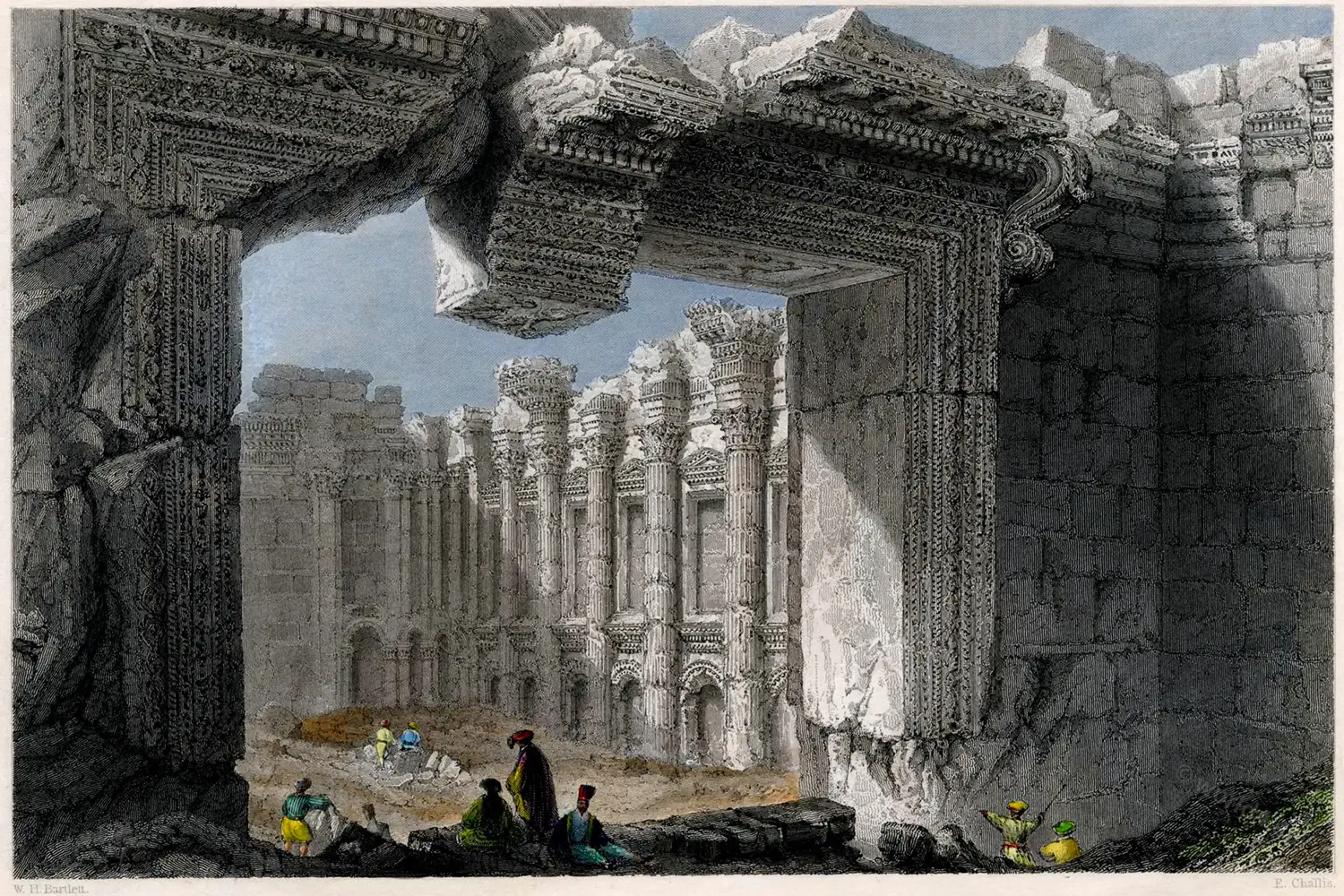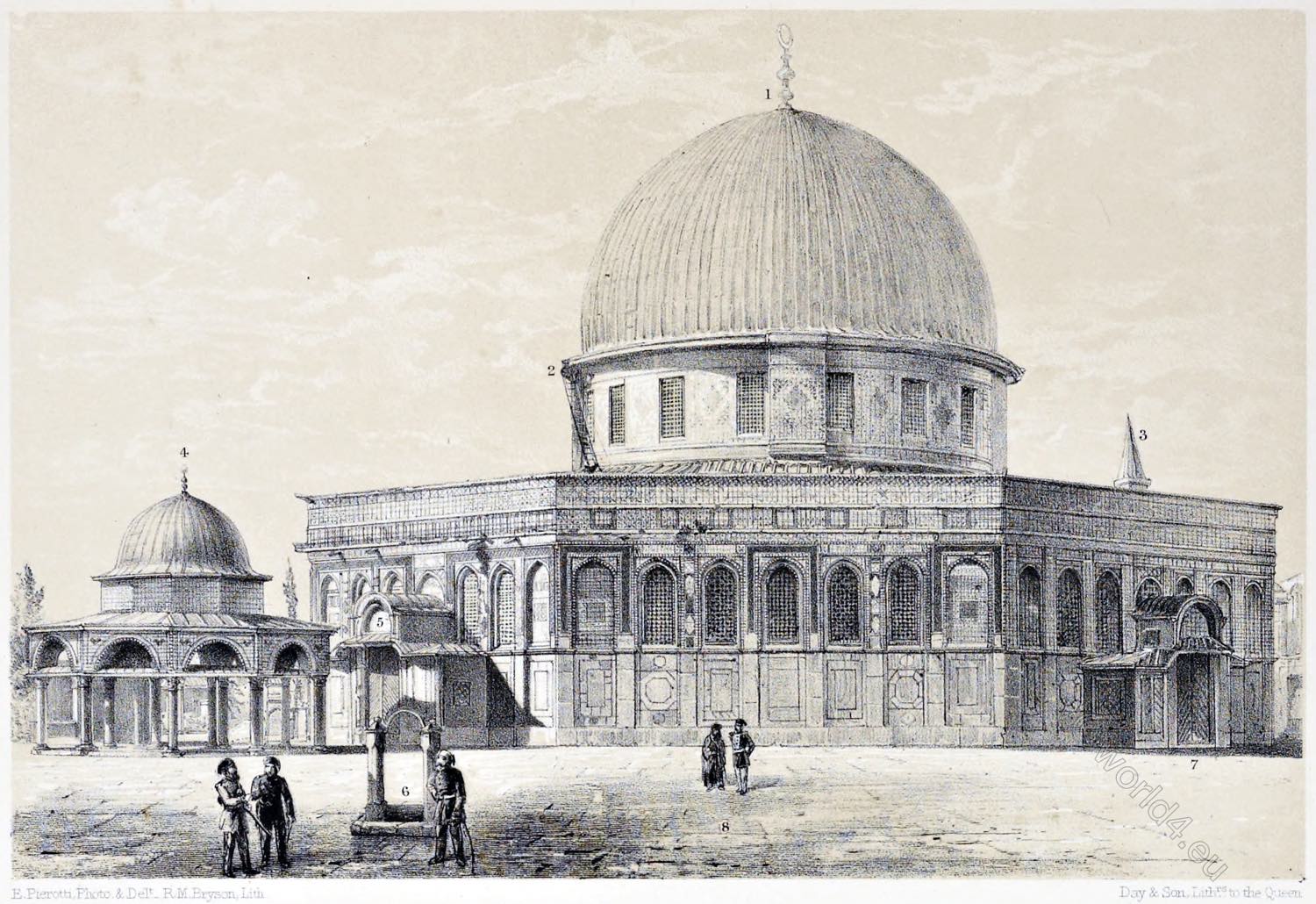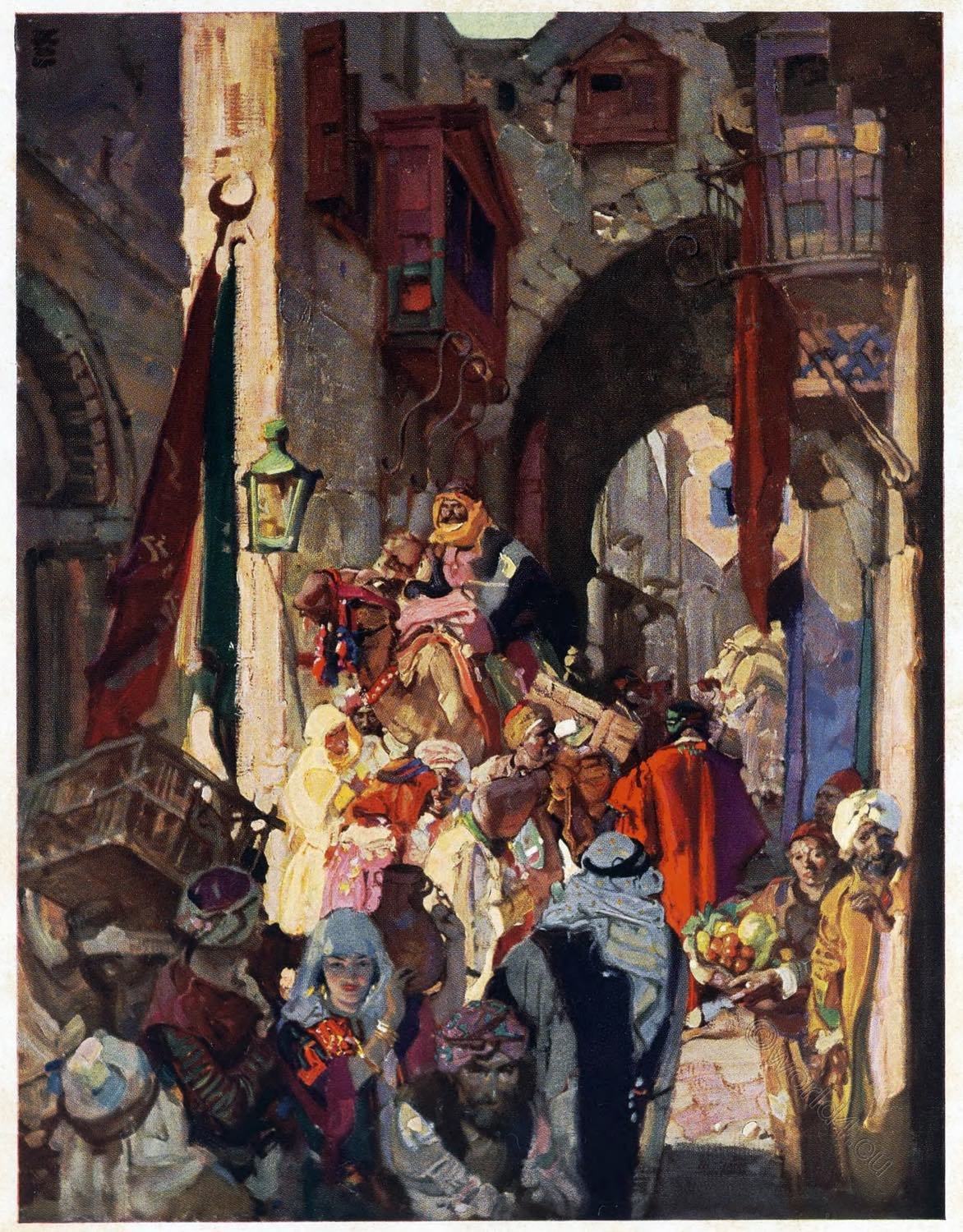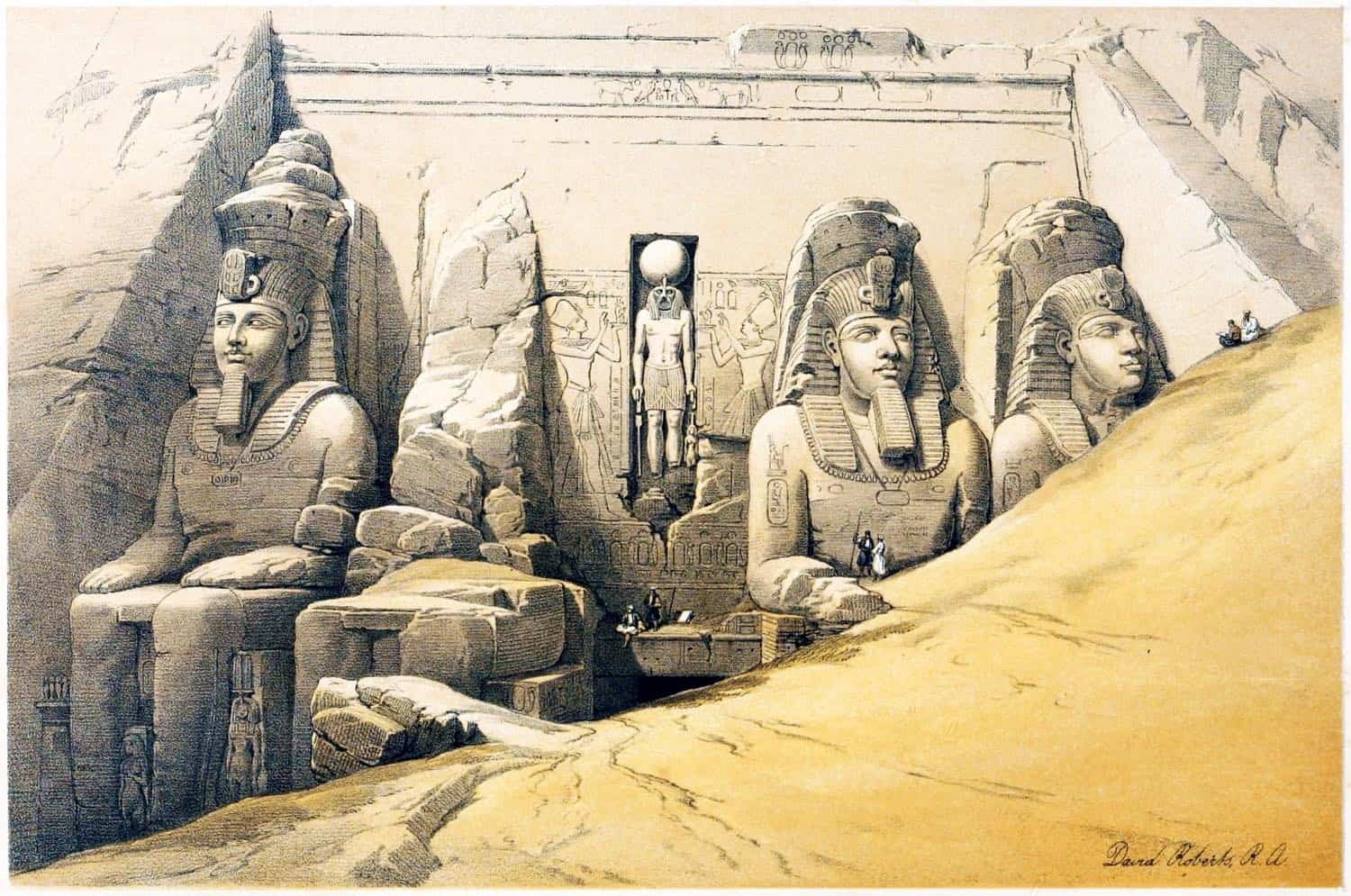
Abu Simbel (Egypt), Great Rock Temple (built under Ramses II 1290-1224 BC). Exterior view. Watercolour, 1838/39, by David Roberts (1796-1864). Engraved by Louis Haghe.
FRONT ELEVATION OF THE GREAT TEMPLE OF ABU SIMBEL.
FRONTISPIECE TO VOL. V.
This additional view of the facade of the Great Temple of Abu Simbel has been chosen by Mr. Roberts in further illustration of the subject.
Descriptions, as far as the limit of our text allows, have been given of the various parts and aspects of this stupendous excavation and sculpture from the living rock as well as of the original discovery of its existence by Burckhardt, the first access to its interior by Belzoni, and the further exposure of a part of its facade to its base by Mr. Hay.
The effect of this wonderful Temple upon travelers who have been fortunate enough to visit it has been, without exception, of the same impressive character. Warburton, in “The Crescent and the Cross,” says: — “Here, at the Temple of Osiris, a space of about one hundred feet in height is hewn from the mountain, smooth, except for the reliefs. Along the summit runs a frieze of monkeys, in long array; than succeed a line of hieroglyphics and some faintly-carved figures, also in relief; and then four colossal giants, that seem to guard the portal. They are seated on thrones, which form, with themselves, part of the living rock, and are about sixty feet high. One is quite perfect, admirably cut, and the proportions accurately preserved; the second is defaced as far as the knee; the third is buried in sand to the waist; and the fourth has only the face and neck visible above the Desert’s sandy avalanche. The doorway stands between the two central statues.”
On entering, the traveller finds himself in a Temple which a few days’ work might restore to the state in which it was left three thousand years ago. The dry climate and its extreme solitude have preserved the most delicate details from injury; besides which it was hermetically sealed by the Desert for thousands of years, until Burckhardt discovered it, Belzoni penetrated it, and Mr. Hay cleared away the protecting sands.
A vast and gloomy hall, such as Eblis might have given Vathek audience in, receives you, in passing from the flaming sunshine into that shadowy portal. It is some time before the eye can ascertain its dimensions, through the imposing gloom but gradually there reveals itself, around and above you, a vast aisle with pillars formed of eight colossal giants, upon whom the light of heaven has never shone. These images of Osiris are backed by enormous pillars, behind which run two great galleries, and in these torchlight alone enabled us to peruse a series of sculptures in relief, representing the triumphs of Remeses II. or Sesostris. The painting which once enhanced the effect of these spirited representations is not dimmed, but crumbled away; where it exists, the colors are as vivid as ever.
This unequalled hall is one hundred feet in length, and from it eight lesser chambers, all sculptured, open to the right and left. Straight on is a low doorway, opening into a second hall, of similar height, supported by four square pillars; and within all is the adytum, wherein stands a simple altar of the living rock, in front of four large figures seated on rocky thrones. The inner shrine is hewn at least one hundred yards into the rock; and here, in the silent depths of that great mountain, these awful idols, with their mysterious altar of human sacrifice, looked very pre-Adamitic and imposing. They seemed to sit there waiting for some great summons which should awaken and reanimate these “kings of the earth who lie in glory, every one in his own house.”
The Temples of Ipsamboul both date from the time of Remeses II., whose history is deeply indebted to the stony chronicles which the chisel wrote therein.
Source: The Holy Land, Syria, Idumea, Arabia, Egypt, & Nubia, by David Roberts, George Croly, William Brockedon. London: Lithographed, printed and published by Day & Son, lithographers to the Queen. Cate Street, Lincoln’s Inn Fields, 1855.
Continuing
Discover more from World4 Costume Culture History
Subscribe to get the latest posts sent to your email.

